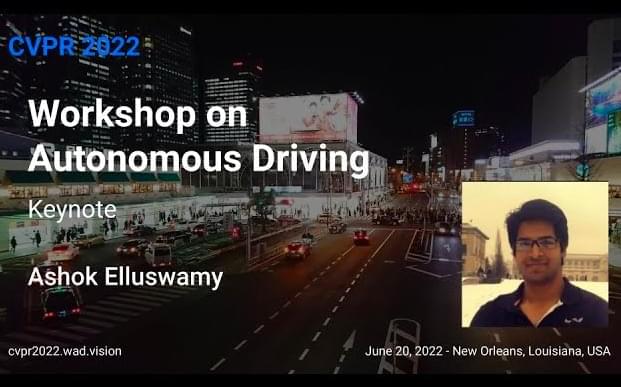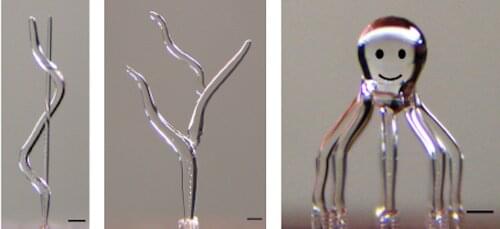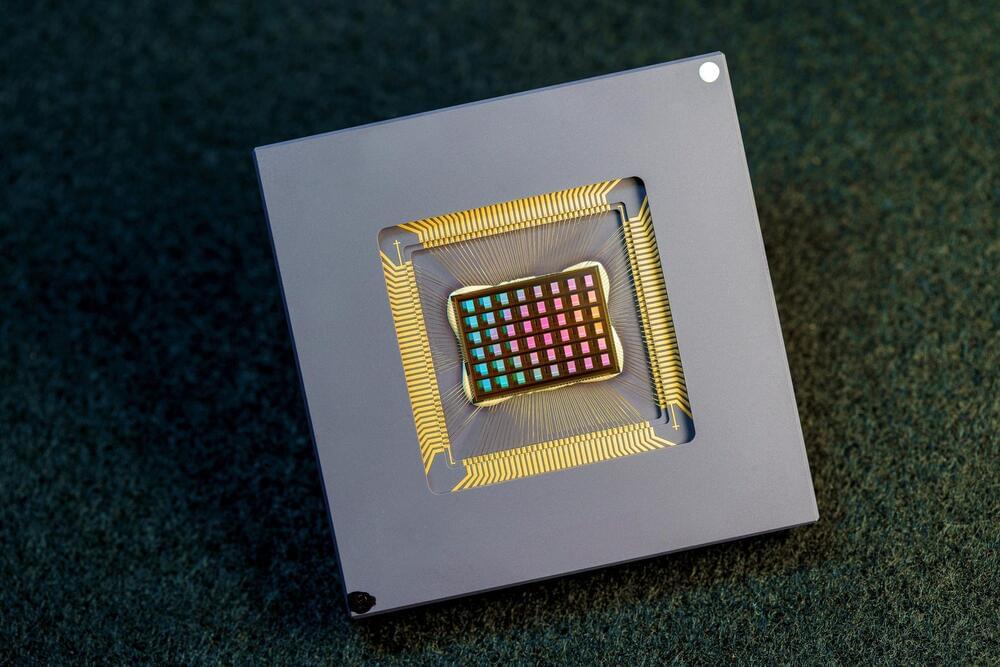Tesla Autopilot is now enabling the car to perceive the space around it thanks to the development of its Occupancy Networks.


❤️ Check out Runway and try it for free here: https://runwayml.com/papers/
📝 The paper “3D Face Reconstruction with Dense Landmarks” is available here:
https://microsoft.github.io/DenseLandmarks/
🙏 We would like to thank our generous Patreon supporters who make Two Minute Papers possible:
Aleksandr Mashrabov, Alex Balfanz, Alex Haro, Andrew Melnychuk, Benji Rabhan, Bryan Learn, B Shang, Christian Ahlin, Eric Martel, Geronimo Moralez, Gordon Child, Ivo Galic, Jace O’Brien, Jack Lukic, John Le, Jonas, Jonathan, Kenneth Davis, Klaus Busse, Kyle Davis, Lorin Atzberger, Lukas Biewald, Matthew Allen Fisher, Michael Albrecht, Michael Tedder, Nevin Spoljaric, Nikhil Velpanur, Owen Campbell-Moore, Owen Skarpness, Rajarshi Nigam, Ramsey Elbasheer, Steef, Taras Bobrovytsky, Ted Johnson, Thomas Krcmar, Timothy Sum Hon Mun, Torsten Reil, Tybie Fitzhugh, Ueli Gallizzi.
If you wish to appear here or pick up other perks, click here: https://www.patreon.com/TwoMinutePapers.
Chapters:
0:00 — Teaser.
0:19 — Use virtual worlds!
0:39 Is that a good idea?
1:28 Does this really work?
1:51 Now 10 times more!
2:13 Previous method.
2:35 New method.
3:15 It gets better!
3:52 From simulation to reality.
4:35 “Gloves“
5:07 How fast is it?
5:35 VS Apple’s ARKit.
6:25 Application to DeepFakes.
Thumbnail background design: Felícia Zsolnai-Fehér — http://felicia.hu.
Károly Zsolnai-Fehér’s links:

However, AI functionalities on these tiny edge devices are limited by the energy provided by a battery. Therefore, improving energy efficiency is crucial. In today’s AI chips, data processing and data storage happen at separate places – a compute unit and a memory unit. The frequent data movement between these units consumes most of the energy during AI processing, so reducing the data movement is the key to addressing the energy issue.
Stanford University engineers have come up with a potential solution: a novel resistive random-access memory (RRAM) chip that does the AI processing within the memory itself, thereby eliminating the separation between the compute and memory units. Their “compute-in-memory” (CIM) chip, called NeuRRAM, is about the size of a fingertip and does more work with limited battery power than what current chips can do.
“Having those calculations done on the chip instead of sending information to and from the cloud could enable faster, more secure, cheaper, and more scalable AI going into the future, and give more people access to AI power,” said H.-S Philip Wong, the Willard R. and Inez Kerr Bell Professor in the School of Engineering.


My point on this would just be that AI will be able to make anything you want into a game, or movie, or TV episode. And, it can be any length you want; play it as it was intended, or you can change it in any direction you want. with movies and TV i also can see people trying to play interactively as a character in the story. media in 2030s.
The founder and CEO of Midjourney, David Holz, has some truly inspiring views around how AI image generation will transform the gaming industry. During the short time we spoke this week, I had to hold myself back from falling too deep into the AI rabbit hole. In the process, I discovered Holz’s view on how this kind of tech will develop and how it’s likely to benefit the gaming industry, as well as human creativity as a whole.
Holz believes that one day in the near future, “you’ll be able to buy a console with a giant AI chip and all the games will be dreams.”

Big scientific breakthroughs often require inventions at the smallest scale. Advances in tissue engineering that can replace hearts and lungs will require the fabrication of artificial tissues that allow for the flow of blood through passages that are no thicker than a strand of hair. Similarly, miniature softbotic (soft-robot) devices that physically interact with humans safely and comfortably will demand the manufacture of components with complex networks of small liquid and airflow channels.
Advances in 3D printing are making it possible to produce such tiny structures. But for those applications that require very small, smooth, internal channels in specific complex geometries, challenges remain. 3D printing of these geometries using traditional processes requires the use of support structures that are difficult to remove after printing. Printing these models using layer-based methods at a high resolution takes a long time and compromises geometric accuracy.
Researchers at Carnegie Mellon University have developed a high-speed, reproducible fabrication method that turns the 3D printing process “inside out.” They developed an approach to 3D print ice structures that can be used to create sacrificial templates that later form the conduits and other open features inside fabricated parts.

NeuRRAM, a new chip that runs computations directly in memory and can run a wide variety of AI applications has been designed and built by an international team of researchers. What sets it apart is that it does this all at a fraction of the energy consumed by computing platforms for general-purpose AI computing.
The NeuRRAM neuromorphic chip brings AI a step closer to running on a broad range of edge devices, disconnected from the cloud. This means they can perform sophisticated cognitive tasks anywhere and anytime without relying on a network connection to a centralized server. Applications for this device abound in every corner of the globe and every facet of our lives. They range from smartwatches to VR headsets, smart earbuds, smart sensors in factories, and rovers for space exploration.
Not only is the NeuRRAM chip twice as energy efficient as the state-of-the-art “compute-in-memory” chips, an innovative class of hybrid chips that runs computations in memory, it also delivers results that are just as accurate as conventional digital chips. Conventional AI platforms are much bulkier and typically are constrained to using large data servers operating in the cloud.
Our perception of our bodies is not always correct or realistic, as any athlete or fashion-conscious person knows, but it’s a crucial factor in how we behave in society. Your brain is continuously preparing for movement while you play ball or get dressed so that you can move your body without bumping, tripping, or falling.
Humans develop our body models as infants, and robots are starting to do the same. A team at Columbia Engineering revealed today that they have developed a robot that, for the first time, can learn a model of its whole body from scratch without any human aid. The researchers explain how their robot built a kinematic model of itself in a recent paper published in Science Robotics, and how it utilized that model to plan movements, accomplish objectives, and avoid obstacles in a range of scenarios. Even damage to its body was automatically detected and corrected.
The world’s first portable brain computer interface (BCI) is being developed by Blackrock and University of Pittsburgh so patients can undergo research trials at home. Rapid Robotics releases fastest and easiest robotic arm setup in requiring no code at all. New AI using light performs 1,000x faster at classifying data.
AI News Timestamps:
0:00 First Portable Brain Computer Interface.
2:29 Rapid Robotics Fastest Robot Arm Setup.
5:03 New AI Using Light Is 1,000x Faster.
👉 Crypto AI News: https://www.youtube.com/c/CryptoAINews/videos.
#ai #robot #news
❤️ Check out Runway and try it for free here: https://runwayml.com/papers/
📝 The paper “3D Face Reconstruction with Dense Landmarks” is available here:
https://microsoft.github.io/DenseLandmarks/
🙏 We would like to thank our generous Patreon supporters who make Two Minute Papers possible:
Aleksandr Mashrabov, Alex Balfanz, Alex Haro, Andrew Melnychuk, Benji Rabhan, Bryan Learn, B Shang, Christian Ahlin, Eric Martel, Geronimo Moralez, Gordon Child, Ivo Galic, Jace O’Brien, Jack Lukic, John Le, Jonas, Jonathan, Kenneth Davis, Klaus Busse, Kyle Davis, Lorin Atzberger, Lukas Biewald, Matthew Allen Fisher, Michael Albrecht, Michael Tedder, Nevin Spoljaric, Nikhil Velpanur, Owen Campbell-Moore, Owen Skarpness, Rajarshi Nigam, Ramsey Elbasheer, Steef, Taras Bobrovytsky, Ted Johnson, Thomas Krcmar, Timothy Sum Hon Mun, Torsten Reil, Tybie Fitzhugh, Ueli Gallizzi.
If you wish to appear here or pick up other perks, click here: https://www.patreon.com/TwoMinutePapers.
Thumbnail background design: Felícia Zsolnai-Fehér — http://felicia.hu.
Károly Zsolnai-Fehér’s links:
Instagram: https://www.instagram.com/twominutepapers/
Twitter: https://twitter.com/twominutepapers.
Web: https://cg.tuwien.ac.at/~zsolnai/